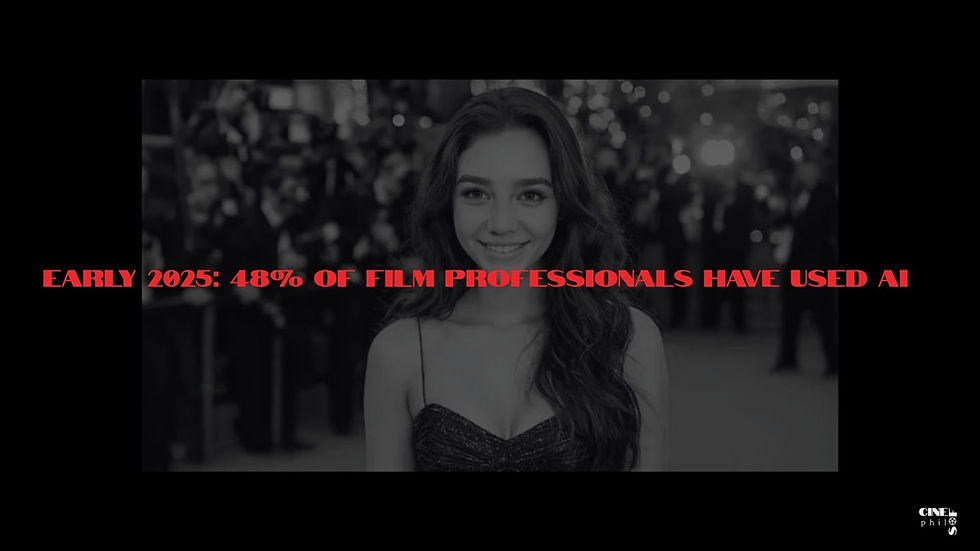Robbie Williams Turns into a Chimp in Better Man– Read Between the Lines, erm, Monkeys
- Sofia R. Willcox

- Dec 17, 2024
- 3 min read
Christmas around the clock, but there are biopics worth talking about. In the United States, there’s A Completely Unknown (James Mangold, 2024), focusing on the young Bob Dylan, played by Timothée Chalamet. Meanwhile, in the United Kingdom, there’s Better Man (Michael Gracey, 2024) about Robbie Williams, who will be none other than a CGI chimp. Are we going ape over that, not giving a monkey about it, or throwing a monkey wrench into it? Monkey ballsacks!
The genre of biographical films dates back to the late 19th century in the earliest cinema. However, the word “biopic” was coined in the 1940s. Essentially, it dramatizes the life of a real person. On the one hand, it creates a bridge between the past and the present while entertaining, educating, and inspiring viewers. On the other hand, over the years, it has become a saturated formula.
Following in the footsteps of other British music icons such as Freddie Mercury, Elton John, and Amy Winehouse, Robbie Williams has an upcoming biopic. This is when he got the monkey off his back and appeared on our screens in a semi-biographical movie featuring a CGI chimp. In an interview with the BBC, he explained the reason why, describing it as his animal spirit, and the trailer reveals in his voice, “But I've always seen myself a little less … evolved.” However, for me, this personification hits deeper layers.
Robbie Williams is from Stoke-on-Trent, which is part of the Black Country, an industrial region in the West Midlands of England. The Black Country has no defined boundaries but is centred around the main towns near Birmingham. Symbolically, monkeys could represent the Black Country. Monkeys are often seen as industrious, quick-thinking, and highly adaptable animals – likewise, the Black Country is historically associated with hard work, ingenuity, and adaptability due to its role as a hub of the Industrial Revolution, as well as its communities that endured tough conditions and adapted over time.
Robbie Williams was the youngest to join Take That, a Manchester pop group that was the soundtrack of the 1990s with many hits on the UK official charts. After four years, in 1994, his drug use escalated, and he nearly had a drug overdose. There were many creative conflicts with the other members, a mix of his musical ideas not being taken seriously and his desire to explore hip hop and rap, while the group focused on ballads. This, combined with his belligerent behaviour and poor attendance, eventually led to his solo career and his imperial phase moment. Again, the monkey’s resilience and ability.
Cheeky monkey monkeying around. Robbie Williams holds a charismatic stage presence and a relatable persona, balanced with a "bad boy" image and self-aware humour. More fun than a barrel of monkeys! – which appeals to a wide demographic. Many mythologies worldwide believe that monkeys embody positive traits. After all, Robbie Williams holds records in sales, charts, streaming, and live performance.
Behind many catchy songs and memories, there is monkey business too, with controversies on the horizon. Legal battles over his solo career, his ex-manager, and accusations of stealing “She’s Madonna.” Not only that, but his personal struggles with mental health and addictions, his rocky relationship with the media, and X-factor outbursts. The music videos for his hit singles “Rock DJ” and “Candy.” In the early 2000s, he was the subject of rumours regarding his sexuality due to his flamboyant stage persona and comments in the media. His controversial social media posts, interviews, and COVID-19 comments. The backlash over his performance at the Qatar World Cup due to the country’s LGBT+phobia. Out of this context, monkeys can indeed be either racist or misogynistic slurs, sometimes even offensive to workers.
An extra layer of controversy is the use of CGI for the chimp. Better Man, like its contemporary Gladiator II, adopts computer-generated imagery instead of real animals. The spectators were real monkeys' uncles. Many claim heavily CGI'd scenes rely on distraction and entertainment, but there is a lack of believability. The same issues arise with animal costumes. While real animals have many controversies involving the law and animal abuse, as well as the challenges of training and uncontrollable actions – after all, monkey see, monkey do not.
With CGI chimps taking centre stage in biographical films, are we witnessing a revolution in the genre? After Better Man, where a pop icon is transformed into an animal spirit, we might soon find ourselves watching biopics where actors transcend humanity altogether. From chimps to Homo sapiens sapiens—where do we go next? Is this a new era for storytelling, or just an amusing gimmick?




Comments